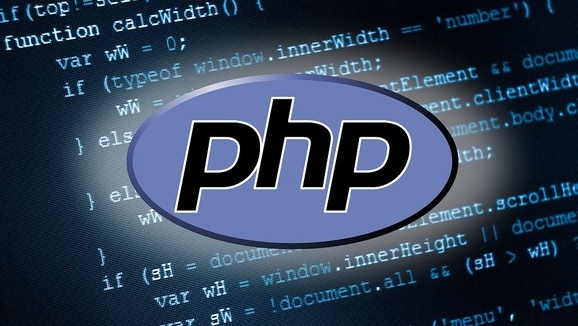Comments are an important part of Clean Code because they explain the intent behind the code rather than repeating the code. Good comments should appear in complex logic, non-intuitive conditional judgments, public API definitions, and to-dos; avoid meaningless descriptions, focus on explaining "why" and keeping them updated while using full sentence expressions. PHP supports three annotation formats: single line, multi-line and docblock. Docblock is not only beautiful, but can also be recognized by the IDE to improve team collaboration efficiency. Following framework specifications also contribute to project unity. Writing comments is not to make up the number of words, but to improve the readability and maintenance of the code and save future understanding costs.

In addition to clear logic and reasonable structure, writing PHP code is also an easy to ignore but very critical part. Clean code and appropriate comments can make it easier for others and even in the future to understand and maintain.

Why are comments part of Clean Code?
Many people think that "clean code" means good variable naming, single function responsibilities, and clear structure. This is true, but the value of comments is ignored. A good comment is not about repeating the code, but about explaining the intention behind the code. for example:
- Why does this function handle boundary situations like this?
- Is there any business reason behind a seemingly strange logic?
- What are the design patterns of this class for?
If this information is only based on the code itself, it is difficult to express clearly, and then comments are needed to fill in.

Where should the comment be written?
Not every line of code needs comments, which will interfere with reading. Focus on the following positions:
- Complex logic or algorithm : For example, a sorting logic uses a specific optimization strategy.
- Non-intuitive judgment conditions : For example,
if ($value % 3 === 0 && $value > 10), you can add a sentence to explain what business meaning this condition represents. - Public API or interface definition : Use docblock to specify parameters, return values, and possible exceptions to be thrown.
- To-do or technical debt tag : like
// TODO: 需要優(yōu)化性能or// FIXME: 臨時方案.
/**
* Calculate user level based on cumulative points and active days*
* @param int $points Total points* @param int $activeDays Number of active days in the last 90 days* @return string User level (bronze/silver/gold/platinum)
*/
function calculateUserLevel(int $points, int $activeDays): string {
// ...
}How to write comments so that they won’t turn into garbage?
Many comments end up becoming "scrap", such as "Set username", but the result is just $this->username = $username; . This is not necessary. A truly useful comment should do the following:

- Don't repeat the code : don't write meaningless comments like "Set ID".
- Explain "why" instead of "what was done" : for example, "The cast to an integer is for compatibility with the old data format."
- Keep updated : the code has been changed and the comments must be synchronized, otherwise it will be more troublesome to mislead others.
- Use full sentences : Although not writing a paper, fluent sentences are helpful for understanding.
Don't ignore the IDE-friendly annotation format
There are three common annotation styles in PHP:
- Single line comment:
// - Multi-line comments:
/* ... */ - Docblock: used for classes, methods, properties, etc., usually in the form of
/** ... */
The docblock format is not only beautiful, but can also be correctly recognized by the IDE, and automatically prompts parameter types, return values and other information. This is especially important for teamwork.
In addition, if you are using mainstream frameworks such as Laravel or Symfony, they also have certain requirements for the annotation specifications. Following the framework style will make the project more unified.
Basically that's it. Comments are not written to make up the word count, but to improve code readability and maintainability. Don't be afraid to take some time to write it clearly. What you may save may be several times the time in the next few times to "guess" what this code is trying to do.
The above is the detailed content of Clean Code and Comments in PHP. For more information, please follow other related articles on the PHP Chinese website!

Hot AI Tools

Undress AI Tool
Undress images for free

Undresser.AI Undress
AI-powered app for creating realistic nude photos

AI Clothes Remover
Online AI tool for removing clothes from photos.

Clothoff.io
AI clothes remover

Video Face Swap
Swap faces in any video effortlessly with our completely free AI face swap tool!

Hot Article

Hot Tools

Notepad++7.3.1
Easy-to-use and free code editor

SublimeText3 Chinese version
Chinese version, very easy to use

Zend Studio 13.0.1
Powerful PHP integrated development environment

Dreamweaver CS6
Visual web development tools

SublimeText3 Mac version
God-level code editing software (SublimeText3)
 PHP calls AI intelligent voice assistant PHP voice interaction system construction
Jul 25, 2025 pm 08:45 PM
PHP calls AI intelligent voice assistant PHP voice interaction system construction
Jul 25, 2025 pm 08:45 PM
User voice input is captured and sent to the PHP backend through the MediaRecorder API of the front-end JavaScript; 2. PHP saves the audio as a temporary file and calls STTAPI (such as Google or Baidu voice recognition) to convert it into text; 3. PHP sends the text to an AI service (such as OpenAIGPT) to obtain intelligent reply; 4. PHP then calls TTSAPI (such as Baidu or Google voice synthesis) to convert the reply to a voice file; 5. PHP streams the voice file back to the front-end to play, completing interaction. The entire process is dominated by PHP to ensure seamless connection between all links.
 How to use PHP to build social sharing functions PHP sharing interface integration practice
Jul 25, 2025 pm 08:51 PM
How to use PHP to build social sharing functions PHP sharing interface integration practice
Jul 25, 2025 pm 08:51 PM
The core method of building social sharing functions in PHP is to dynamically generate sharing links that meet the requirements of each platform. 1. First get the current page or specified URL and article information; 2. Use urlencode to encode the parameters; 3. Splice and generate sharing links according to the protocols of each platform; 4. Display links on the front end for users to click and share; 5. Dynamically generate OG tags on the page to optimize sharing content display; 6. Be sure to escape user input to prevent XSS attacks. This method does not require complex authentication, has low maintenance costs, and is suitable for most content sharing needs.
 How to use PHP combined with AI to achieve text error correction PHP syntax detection and optimization
Jul 25, 2025 pm 08:57 PM
How to use PHP combined with AI to achieve text error correction PHP syntax detection and optimization
Jul 25, 2025 pm 08:57 PM
To realize text error correction and syntax optimization with AI, you need to follow the following steps: 1. Select a suitable AI model or API, such as Baidu, Tencent API or open source NLP library; 2. Call the API through PHP's curl or Guzzle and process the return results; 3. Display error correction information in the application and allow users to choose whether to adopt it; 4. Use php-l and PHP_CodeSniffer for syntax detection and code optimization; 5. Continuously collect feedback and update the model or rules to improve the effect. When choosing AIAPI, focus on evaluating accuracy, response speed, price and support for PHP. Code optimization should follow PSR specifications, use cache reasonably, avoid circular queries, review code regularly, and use X
 PHP creates a blog comment system to monetize PHP comment review and anti-brush strategy
Jul 25, 2025 pm 08:27 PM
PHP creates a blog comment system to monetize PHP comment review and anti-brush strategy
Jul 25, 2025 pm 08:27 PM
1. Maximizing the commercial value of the comment system requires combining native advertising precise delivery, user paid value-added services (such as uploading pictures, top-up comments), influence incentive mechanism based on comment quality, and compliance anonymous data insight monetization; 2. The audit strategy should adopt a combination of pre-audit dynamic keyword filtering and user reporting mechanisms, supplemented by comment quality rating to achieve content hierarchical exposure; 3. Anti-brushing requires the construction of multi-layer defense: reCAPTCHAv3 sensorless verification, Honeypot honeypot field recognition robot, IP and timestamp frequency limit prevents watering, and content pattern recognition marks suspicious comments, and continuously iterate to deal with attacks.
 How to use PHP to combine AI to generate image. PHP automatically generates art works
Jul 25, 2025 pm 07:21 PM
How to use PHP to combine AI to generate image. PHP automatically generates art works
Jul 25, 2025 pm 07:21 PM
PHP does not directly perform AI image processing, but integrates through APIs, because it is good at web development rather than computing-intensive tasks. API integration can achieve professional division of labor, reduce costs, and improve efficiency; 2. Integrating key technologies include using Guzzle or cURL to send HTTP requests, JSON data encoding and decoding, API key security authentication, asynchronous queue processing time-consuming tasks, robust error handling and retry mechanism, image storage and display; 3. Common challenges include API cost out of control, uncontrollable generation results, poor user experience, security risks and difficult data management. The response strategies are setting user quotas and caches, providing propt guidance and multi-picture selection, asynchronous notifications and progress prompts, key environment variable storage and content audit, and cloud storage.
 PHP realizes commodity inventory management and monetization PHP inventory synchronization and alarm mechanism
Jul 25, 2025 pm 08:30 PM
PHP realizes commodity inventory management and monetization PHP inventory synchronization and alarm mechanism
Jul 25, 2025 pm 08:30 PM
PHP ensures inventory deduction atomicity through database transactions and FORUPDATE row locks to prevent high concurrent overselling; 2. Multi-platform inventory consistency depends on centralized management and event-driven synchronization, combining API/Webhook notifications and message queues to ensure reliable data transmission; 3. The alarm mechanism should set low inventory, zero/negative inventory, unsalable sales, replenishment cycles and abnormal fluctuations strategies in different scenarios, and select DingTalk, SMS or Email Responsible Persons according to the urgency, and the alarm information must be complete and clear to achieve business adaptation and rapid response.
 Beyond the LAMP Stack: PHP's Role in Modern Enterprise Architecture
Jul 27, 2025 am 04:31 AM
Beyond the LAMP Stack: PHP's Role in Modern Enterprise Architecture
Jul 27, 2025 am 04:31 AM
PHPisstillrelevantinmodernenterpriseenvironments.1.ModernPHP(7.xand8.x)offersperformancegains,stricttyping,JITcompilation,andmodernsyntax,makingitsuitableforlarge-scaleapplications.2.PHPintegrateseffectivelyinhybridarchitectures,servingasanAPIgateway
 PHP integrated AI speech recognition and translator PHP meeting record automatic generation solution
Jul 25, 2025 pm 07:06 PM
PHP integrated AI speech recognition and translator PHP meeting record automatic generation solution
Jul 25, 2025 pm 07:06 PM
Select the appropriate AI voice recognition service and integrate PHPSDK; 2. Use PHP to call ffmpeg to convert recordings into API-required formats (such as wav); 3. Upload files to cloud storage and call API asynchronous recognition; 4. Analyze JSON results and organize text using NLP technology; 5. Generate Word or Markdown documents to complete the automation of meeting records. The entire process needs to ensure data encryption, access control and compliance to ensure privacy and security.






